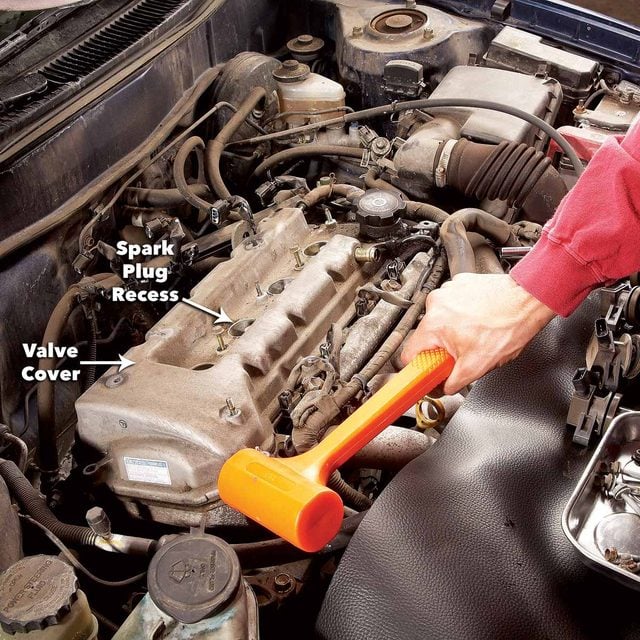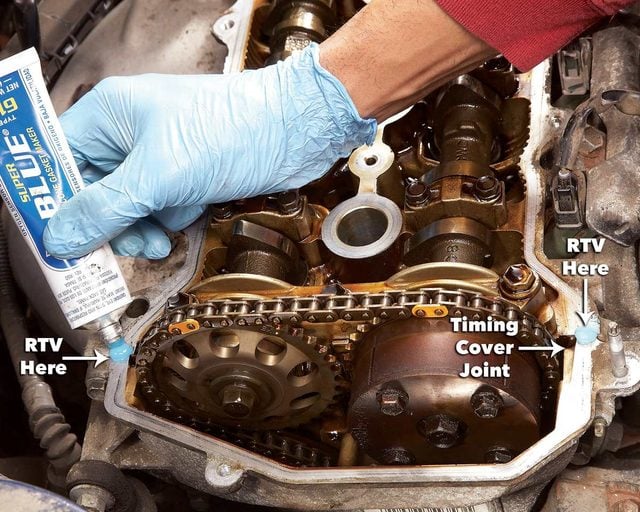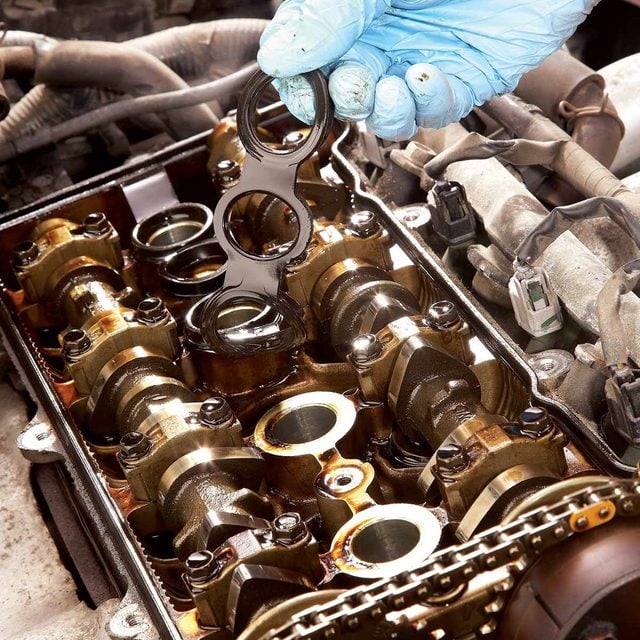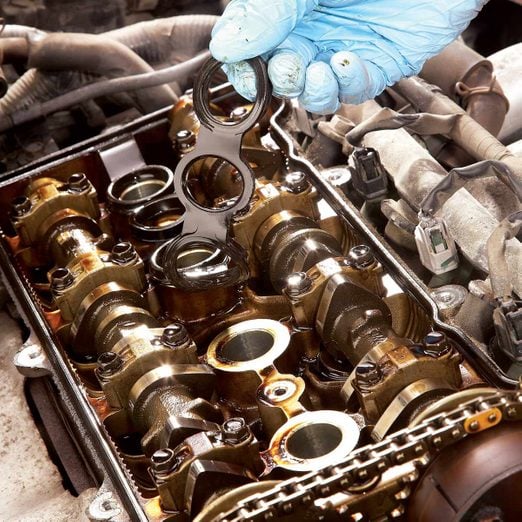How to Replace a Valve Cover Gasket Leak in 3 Steps
Updated: Jul. 17, 2023
Replace the leaking valve cover gasket on a 4-cylinder engine in less than an hour
Introduction
Replace a leaky gasket cover on a 4-cylinder engine easily and in less than an hour for less than $25. We show you how to do it, step-by-step.Tools Required
- Plastic putty knife
- Rubber mallet
- Socket/ratchet set
- Torque wrench
Materials Required
- Brake cleaner
- Valve cover gasket kit
- Vulcanizing (RTV) sealant
What Happens if My Valve Cover Gasket is Leaking?
On a V-type engine, the leaking oil usually just drips down the side of the engine (and onto your driveway) and turns into black muck. But on a four-cylinder engine, it can actually leak into the spark plug tubes and cause misfires. Replacing the gaskets on a V-type engine is a job for the pros. But the valve cover gasket replacement cost on a four-cylinder engine is less than $25 and can be done in about an hour.
Project step-by-step (3)
Remove the Leaky Valve Gasket Cover

Start the job by removing the decorative plastic cover on the top of the engine (if equipped). Remove the bolts and tap around the valve cover with a soft-faced mallet to break it loose. Never pry with metal tools—they can gouge the aluminum cylinder head and cause permanent leaks. Next, remove (and label) any hoses, cables and electrical connectors that attach to the valve cover. Then remove the spark plugs (these are the tools you’ll need).
If you see any oil pooling in the spark plug tubes, clean it out with a rag wrapped around a screwdriver. Get out as much gunk as you can and then remove and, if necessary, replace the spark plugs with new ones before proceeding. Once the new plugs are in, remove the valve cover hold-down bolts, noting the length and location of each bolt. Then break the valve cover loose and lift it off the engine.
Time for an oil change? Here’s how you can change car oil yourself.
Replace the Old Gasket

Peel off the old gasket and clean the valve cover with brake cleaner and clean rags. Next, clean the gasket mating surfaces on the engine. Use the plastic putty knife (never metal) to remove any traces of old RTV from the timing belt cover-to-cylinder head. Catch the old RTV with a rag so it doesn’t fall into the engine. Once the cover and mating surfaces are clean and dry, apply new RTV in the same locations and install the new gasket. Valve cover gaskets are designed to seal “dry,” so don’t apply sealant to the face of the gasket.
Finish off the job by snugging up the valve cover bolts to the torque specifications in your shop manual. Keep in mind that valve cover bolt specs are usually shown in inch/lbs., not foot/ lbs. To convert inch/lbs. to foot/lbs., simply divide by 12.
Reinstall all the cables, hoses, ignition components and electrical connectors and fire it up.
Adding Silicone Sealant

When my dad and I were changing the spark plugs on my Saturn, we noticed oil leaking around them. My dad said it was from a leaky valve cover gasket. A valve cover gasket cost $20 and we had it installed in about 20 minutes—it was really easy.
But a few weeks later it was leaking again. We didn’t know we had to smear silicone sealant over the timing cover joint. We redid the whole job, including the goop step this time, and it’s been leak-free ever since.
The best part is, I figure I saved about $100 on valve cover gasket replacement cost! Morgan Larson
Check out these 100 Super-Simple Car Repairs You Don’t Need to Go to the Shop For.
